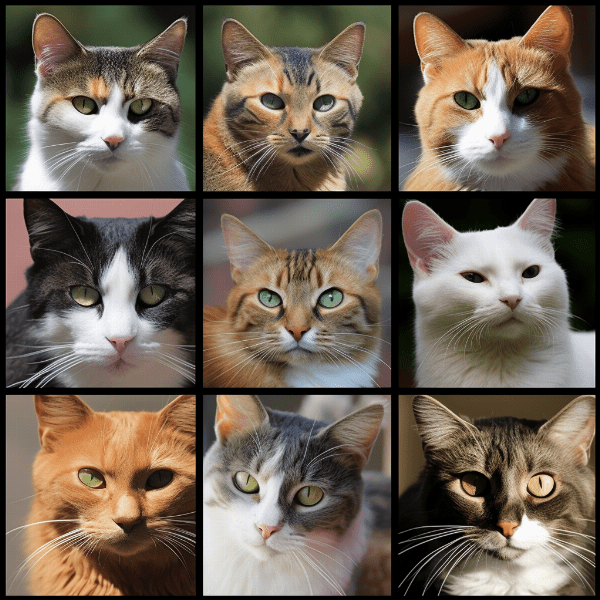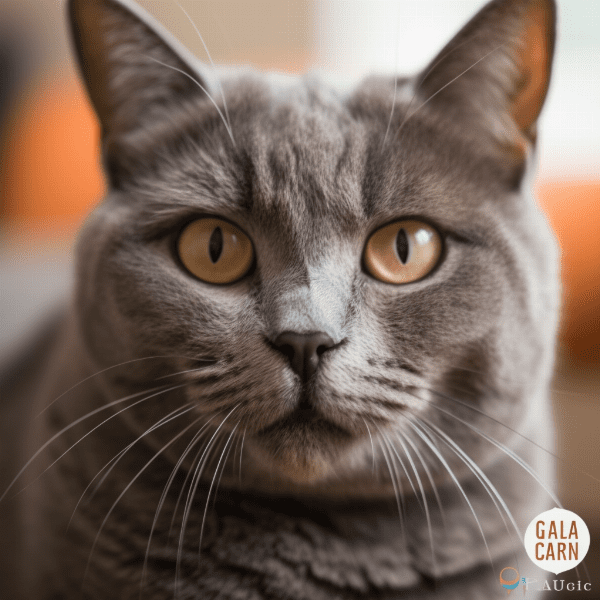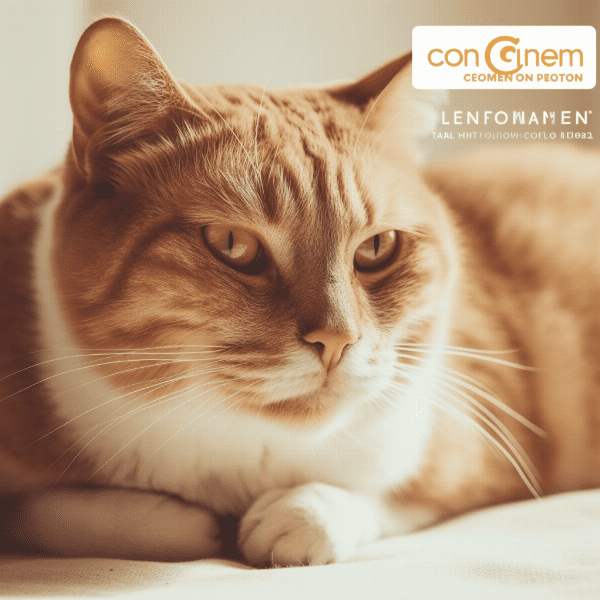Table of Contents
- What is Feline Breast Cancer?
- Symptoms and Diagnosis
- Risk Factors and Prevention
- Treatment Options
- Surgical Procedures for Feline Breast Cancer
- Chemotherapy and Radiation Therapy
- Prognosis and Survival Rates
- Supporting Your Cat through Treatment
- Monitoring and Follow-Up Care
- Resources for Feline Breast Cancer Support
What is Feline Breast Cancer?
Feline breast cancer, also known as mammary gland cancer, is a common type of cancer in unspayed female cats. It is estimated that 1 in 4 unspayed female cats will develop breast cancer at some point in their lives. The cancer usually originates in the mammary glands and can spread to other parts of the body if left untreated.
Types of Feline Breast Cancer
There are different types of feline breast cancer that can occur, including adenocarcinoma, inflammatory carcinoma, and fibrosarcoma. Adenocarcinoma is the most common type, and it arises from the glandular tissue of the mammary gland. Inflammatory carcinoma is a more aggressive and fast-spreading type of breast cancer. Fibrosarcoma is a type of breast cancer that arises from the connective tissue of the mammary gland.
Causes of Feline Breast Cancer
The exact cause of feline breast cancer is not known, but there are several risk factors that may contribute to its development. These include genetics, hormonal imbalances, exposure to certain chemicals, and obesity. It is important to note that unspayed female cats are at a higher risk of developing breast cancer than spayed female cats.
Conclusion
Feline breast cancer is a common and potentially serious condition that can affect unspayed female cats. If you notice any signs or symptoms of breast cancer in your cat, it is important to seek veterinary care as soon as possible. With early detection and prompt treatment, the prognosis for feline breast cancer can be good.
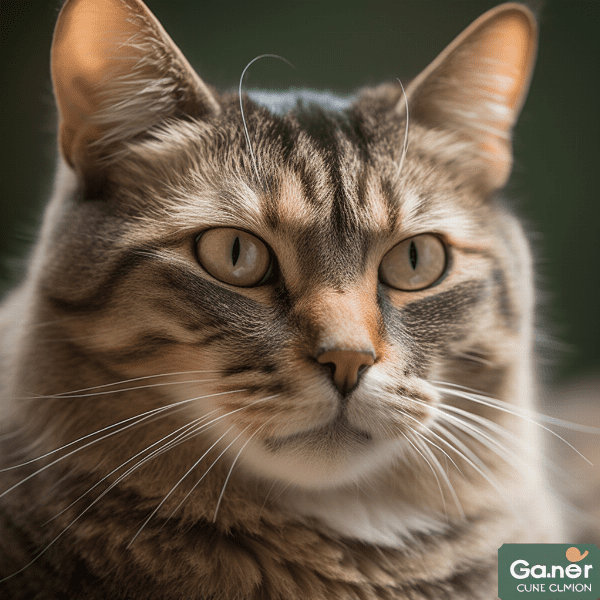
Symptoms and Diagnosis
Early detection of feline breast cancer is key to successful treatment and a positive prognosis. Knowing the signs and symptoms of breast cancer in cats and getting a proper diagnosis from a veterinarian is crucial.
Signs and Symptoms
The signs and symptoms of feline breast cancer may vary depending on the type and stage of the cancer. However, common signs include:
- A lump or mass in the mammary gland area
- Swelling or enlargement of the mammary glands
- Discharge from the nipples
- Redness or ulceration of the skin around the mammary glands
- Changes in the shape or appearance of the mammary glands
- Lethargy, loss of appetite, and weight loss
Diagnosis
If you notice any of the above signs or symptoms in your cat, it is important to seek veterinary care immediately. Your veterinarian will perform a thorough physical examination of your cat and may recommend further diagnostic tests such as:
- Fine-needle aspiration (FNA): A small needle is used to collect a sample of cells from the lump or mass for analysis under a microscope.
- Biopsy: A small piece of the lump or mass is removed for examination to determine if it is cancerous.
- Imaging tests: X-rays or ultrasounds may be used to determine if the cancer has spread to other parts of the body.
Early detection and proper diagnosis are crucial for successful treatment and a positive prognosis for feline breast cancer. Regular veterinary checkups and screenings are important for catching breast cancer in its early stages.
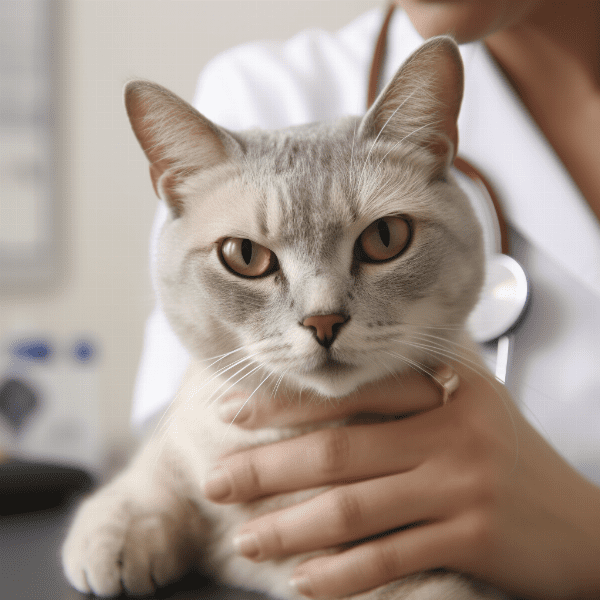
Risk Factors and Prevention
While the exact cause of feline breast cancer is not known, there are certain risk factors that may increase the likelihood of its development. By understanding these risk factors, you can take steps to reduce the risk of breast cancer in your cat.
- Age: Feline breast cancer is more common in older cats, particularly those over the age of 10.
- Genetics: Certain breeds of cats, such as Siamese and Persian, may be more prone to developing breast cancer.
- Hormones: Unspayed female cats are at a higher risk of developing breast cancer due to prolonged exposure to hormones such as estrogen.
- Environmental factors: Exposure to certain chemicals, such as pesticides and herbicides, may increase the risk of breast cancer in cats.
- Obesity: Overweight cats may be more prone to developing breast cancer.
Prevention
While some risk factors, such as age and genetics, cannot be controlled, there are steps you can take to reduce the risk of breast cancer in your cat:
- Spay your cat: Spaying your female cat before her first heat cycle significantly reduces the risk of breast cancer.
- Monitor your cat’s weight: Keeping your cat at a healthy weight through diet and exercise can reduce the risk of breast cancer.
- Limit exposure to chemicals: Avoid using chemicals and pesticides in and around your home.
- Regular veterinary checkups: Regular checkups with your veterinarian can help detect breast cancer in its early stages.
By understanding the risk factors and taking preventative measures, you can help reduce the risk of feline breast cancer in your cat.

Treatment Options
The treatment for feline breast cancer may vary depending on the type and stage of the cancer. Treatment options may include surgery, chemotherapy, and radiation therapy. Your veterinarian will recommend the best course of treatment for your cat based on the individual case.
Surgery
Surgery is often the primary treatment for feline breast cancer. The goal of surgery is to remove the tumor and any affected tissue around it. In some cases, a mastectomy may be necessary to remove the entire mammary gland. Depending on the stage of the cancer, lymph node removal may also be necessary. Surgery is often followed by additional treatment such as chemotherapy or radiation therapy.
Chemotherapy
Chemotherapy is a treatment that uses drugs to kill cancer cells. Chemotherapy may be recommended if the cancer has spread to other parts of the body. Chemotherapy is typically administered in a series of treatments over several weeks or months.
Palliative Care
In cases where the cancer has progressed and cannot be cured, palliative care may be recommended to manage symptoms and improve quality of life. Palliative care may include pain management, nutritional support, and other supportive therapies.
The treatment options for feline breast cancer can be complex, and it is important to work closely with your veterinarian to determine the best course of treatment for your cat. With proper treatment, many cats with breast cancer can have a good prognosis and quality of life.

Surgical Procedures for Feline Breast Cancer
Surgery is often the primary treatment for feline breast cancer. There are several surgical procedures that may be used to remove the tumor and affected tissue.
Lumpectomy
A lumpectomy is a surgical procedure that removes the tumor and a small amount of surrounding tissue. This procedure is typically used for small tumors that have not spread to other parts of the body.
Mastectomy
A mastectomy is a surgical procedure that removes the entire mammary gland. This procedure may be necessary if the cancer has spread to multiple mammary glands or if the tumor is too large for a lumpectomy.
Regional Lymph Node Removal
If the cancer has spread to the lymph nodes, regional lymph node removal may be necessary. This procedure involves removing the lymph nodes surrounding the affected area to prevent the cancer from spreading further.
Modified Radical Mastectomy
A modified radical mastectomy is a surgical procedure that involves removing the entire mammary gland, as well as the lymph nodes surrounding the gland. This procedure may be necessary if the cancer has spread to the lymph nodes.
Recovery
After surgery, your cat will need to be closely monitored by your veterinarian. Your cat may need pain management medication and may require a special diet during the recovery period. It is important to follow your veterinarian’s instructions for post-surgical care to ensure a smooth recovery.
Surgical procedures are an important part of the treatment for feline breast cancer. By working closely with your veterinarian and following post-surgical care instructions, you can help ensure the best possible outcome for your cat.
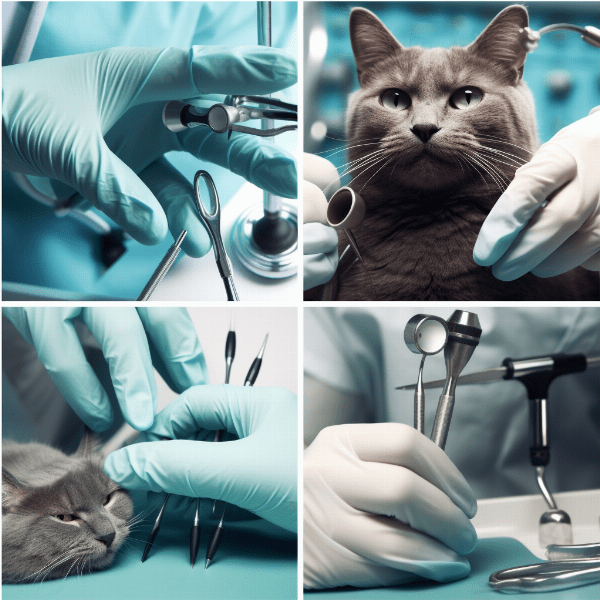
Chemotherapy and Radiation Therapy
In addition to surgical procedures, chemotherapy and radiation therapy may be used to treat feline breast cancer. These treatments may be used alone or in combination with surgery, depending on the type and stage of the cancer.
Radiation Therapy
Radiation therapy uses high-energy radiation to kill cancer cells. The radiation is typically administered externally, and the treatment may last several weeks. Radiation therapy may be used to treat cancer that has not spread to other parts of the body, as well as to reduce the risk of cancer recurrence after surgery.
Side Effects
Both chemotherapy and radiation therapy can cause side effects in cats. Common side effects of chemotherapy include nausea, vomiting, and loss of appetite. Radiation therapy may cause skin irritation and fatigue. Your veterinarian will monitor your cat closely during treatment and may recommend medications or other therapies to manage side effects.
Conclusion
Chemotherapy and radiation therapy are important treatment options for feline breast cancer. By working closely with your veterinarian and following the recommended treatment plan, you can help ensure the best possible outcome for your cat. While these treatments can cause side effects, they can also provide significant benefits in the fight against cancer.

Prognosis and Survival Rates
The prognosis and survival rates for feline breast cancer depend on several factors, including the type and stage of the cancer, the age and overall health of the cat, and the treatment plan.
Prognosis
The prognosis for feline breast cancer is generally good when the cancer is caught early and appropriate treatment is administered. The earlier the cancer is detected and treated, the better the prognosis. However, if the cancer has spread to other parts of the body, the prognosis may be less favorable.
Survival Rates
The survival rate for feline breast cancer varies depending on the stage of the cancer and the type of treatment administered. Cats with early-stage breast cancer that is treated with surgery alone may have a survival rate of up to 90%. Cats with more advanced cancer that requires a combination of surgery, chemotherapy, and radiation therapy may have a survival rate of 50% or less.
Follow-Up Care
After treatment for feline breast cancer, it is important to continue regular veterinary checkups and screenings to monitor for any signs of cancer recurrence. Your veterinarian may recommend additional imaging tests, such as X-rays or ultrasounds, to monitor for any signs of cancer.
Conclusion
The prognosis and survival rates for feline breast cancer depend on several factors, but with appropriate treatment and close monitoring, many cats can go on to live long and healthy lives. Regular veterinary checkups and screenings are important for detecting breast cancer in its early stages and ensuring the best possible outcome for your cat.
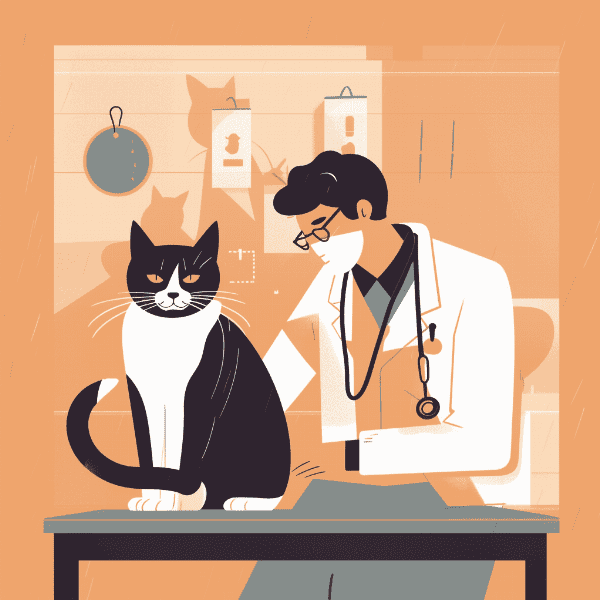
Supporting Your Cat through Treatment
Dealing with a diagnosis of feline breast cancer can be challenging for both you and your cat. Here are some tips for supporting your cat through treatment:
Provide Comfort and Care
During treatment, your cat may experience side effects such as nausea, vomiting, and fatigue. Providing a comfortable and quiet space for your cat to rest can help ease these symptoms. You may also need to adjust your cat’s diet or provide nutritional supplements to support their overall health.
Give Medications as Directed
If your cat is receiving chemotherapy or other medications, it is important to give the medications as directed by your veterinarian. Missing doses or giving the wrong dose can have serious consequences for your cat’s health.
Provide Emotional Support
Dealing with a diagnosis of feline breast cancer can be stressful and emotional for both you and your cat. Providing emotional support, such as spending time with your cat and engaging in activities they enjoy, can help reduce stress and anxiety.
Conclusion
Supporting your cat through treatment for feline breast cancer can be challenging, but with proper care and attention, you can help ensure the best possible outcome for your cat. By providing comfort and care, monitoring your cat’s progress, giving medications as directed, and providing emotional support, you can help your cat through this difficult time.

Monitoring and Follow-Up Care
After treatment for feline breast cancer, monitoring and follow-up care are important for detecting any signs of cancer recurrence and ensuring the best possible outcome for your cat.
Regular Checkups
Regular checkups with your veterinarian are important for monitoring your cat’s overall health and detecting any signs of cancer recurrence. Your veterinarian may recommend additional imaging tests, such as X-rays or ultrasounds, to monitor for any signs of cancer.
Nutritional Support
Proper nutrition is important for supporting your cat’s overall health during and after treatment for breast cancer. Your veterinarian may recommend a special diet or nutritional supplements to support your cat’s recovery.
Exercise and Activity
Regular exercise and activity are important for maintaining your cat’s physical and mental well-being. Your veterinarian may recommend a specific exercise plan for your cat based on their individual needs and overall health.
Managing Side Effects
Some cats may experience side effects such as nausea, vomiting, and fatigue during and after treatment for feline breast cancer. Your veterinarian may recommend medications or other therapies to manage these side effects and improve your cat’s quality of life.
Conclusion
Monitoring and follow-up care are important for detecting any signs of cancer recurrence and ensuring the best possible outcome for your cat after treatment for feline breast cancer. By staying vigilant, providing proper nutrition and exercise, managing side effects, and following your veterinarian’s recommendations, you can help your cat maintain a good quality of life after treatment.
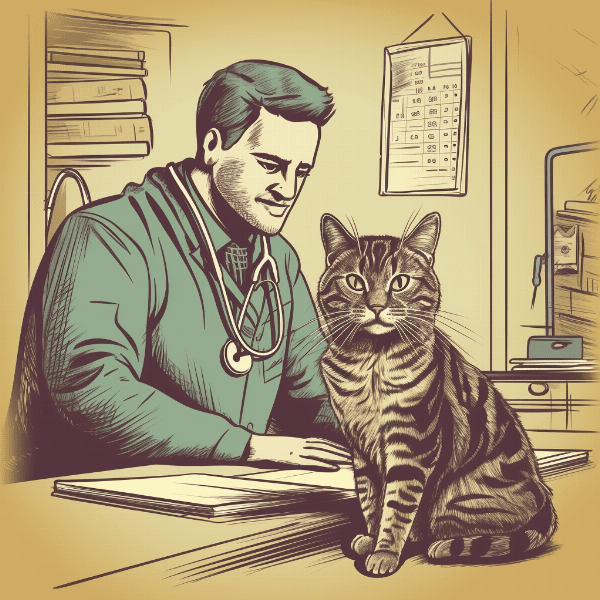
Resources for Feline Breast Cancer Support
Dealing with a diagnosis of feline breast cancer can be overwhelming, but there are resources available to help you and your cat through this difficult time.
Veterinary Oncologists
A veterinary oncologist is a veterinarian who specializes in the diagnosis and treatment of cancer in animals. Working with a veterinary oncologist can provide you with access to the latest treatment options and expertise in managing feline breast cancer.
Support Groups
Support groups can provide emotional support and a sense of community for those dealing with a diagnosis of feline breast cancer. Your veterinarian or local animal welfare organization may be able to provide information on support groups in your area.
Online Resources
There are many online resources available for those dealing with a diagnosis of feline breast cancer. Websites such as the Veterinary Cancer Society and the American Animal Hospital Association provide information on the diagnosis, treatment, and management of cancer in animals.
Financial Assistance
Treatment for feline breast cancer can be expensive, but there are organizations that provide financial assistance for pet owners in need. The Pet Fund and RedRover are two organizations that provide financial assistance for veterinary care.
Conclusion
Dealing with a diagnosis of feline breast cancer can be challenging, but there are resources available to help you and your cat through this difficult time. By working with a veterinary oncologist, joining a support group, accessing online resources, and exploring financial assistance options, you can help ensure the best possible outcome for your cat.
